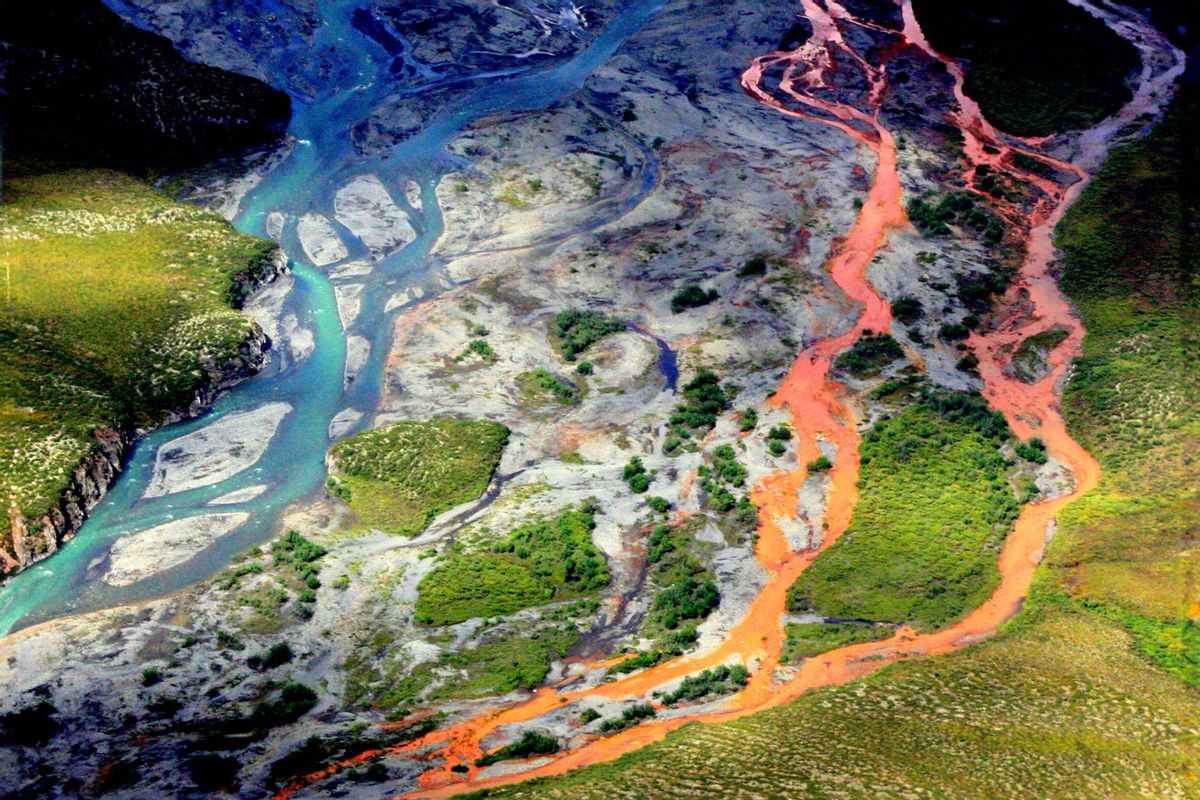In Alaska, dozens of the state's rivers are turning orange and climate change seems to be to blame.
According to a recent study published in the journal Communications Earth & Environment, iron and other toxic metals are leaching into the water supply for 75 streams in Alaska’s Brooks Range. The scientists used remote sensing to determine that these substances began entering the river systems within the last 10 years, corresponding with a period when climate change caused increased warming and snowfall. The researchers theorize that the permafrost has started to thaw due to these developments, causing orange streams that have lower pH and higher concentrations of iron, sulfate and trace metals. In addition to turning the rivers an unnatural color, the permafrost thaw is creating health risks for nearby Alaskans.
"Stream discoloration was associated with dramatic declines in macroinvertebrate diversity and fish abundance," the authors write. "These findings have considerable implications for drinking water supplies and subsistence fisheries in rural Alaska."
In a press statement, the study's author described how the research team made the stomach-churning discovery that a pattern existed for Alaska's rivers.
“The more we flew around, we started noticing more and more orange rivers and streams,” said Jon O’Donnell, an ecologist for the NPS’ Arctic Inventory and Monitoring Network. “There are certain sites that look almost like a milky orange juice."
Rivers can change colors for a wide range of reasons. Yellow rivers often have problems with too much suspended sentiment; green rivers are likely colored that way due to algae; and blue rivers contain relatively clear waters. When rivers change colors, scientists can use their knowledge of river ecosystems to diagnose why.
"If you recall to visible light spectrum R-O-Y-G-B-I-V (red, orange, yellow, green, blue, violet), a significant 'red-shifted' trend simply means that there is a trend towards the red yellow end of the spectrum, which could mean a river is changing from green-blue to green," Dr. John Gardner, co-author of a study on river colors journal Geophysical Research Letters, told Salon in 2021. "Similarly, a 'blue-shifted' trend means a river is trending towards the blue/green end of the spectrum, which could mean a river is changing from yellow-orange to yellow, or green-yellow to green."

Shares